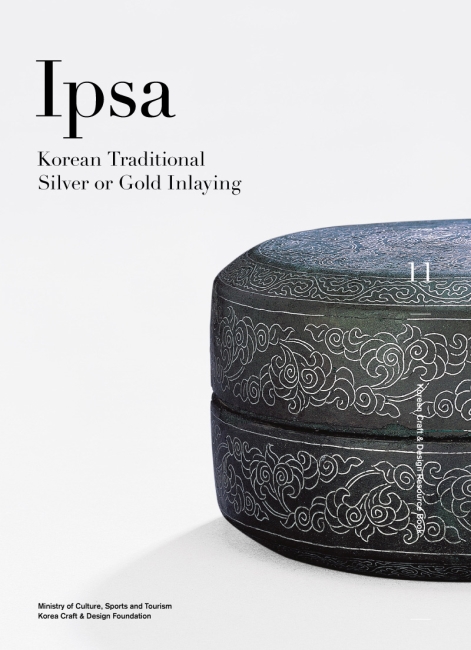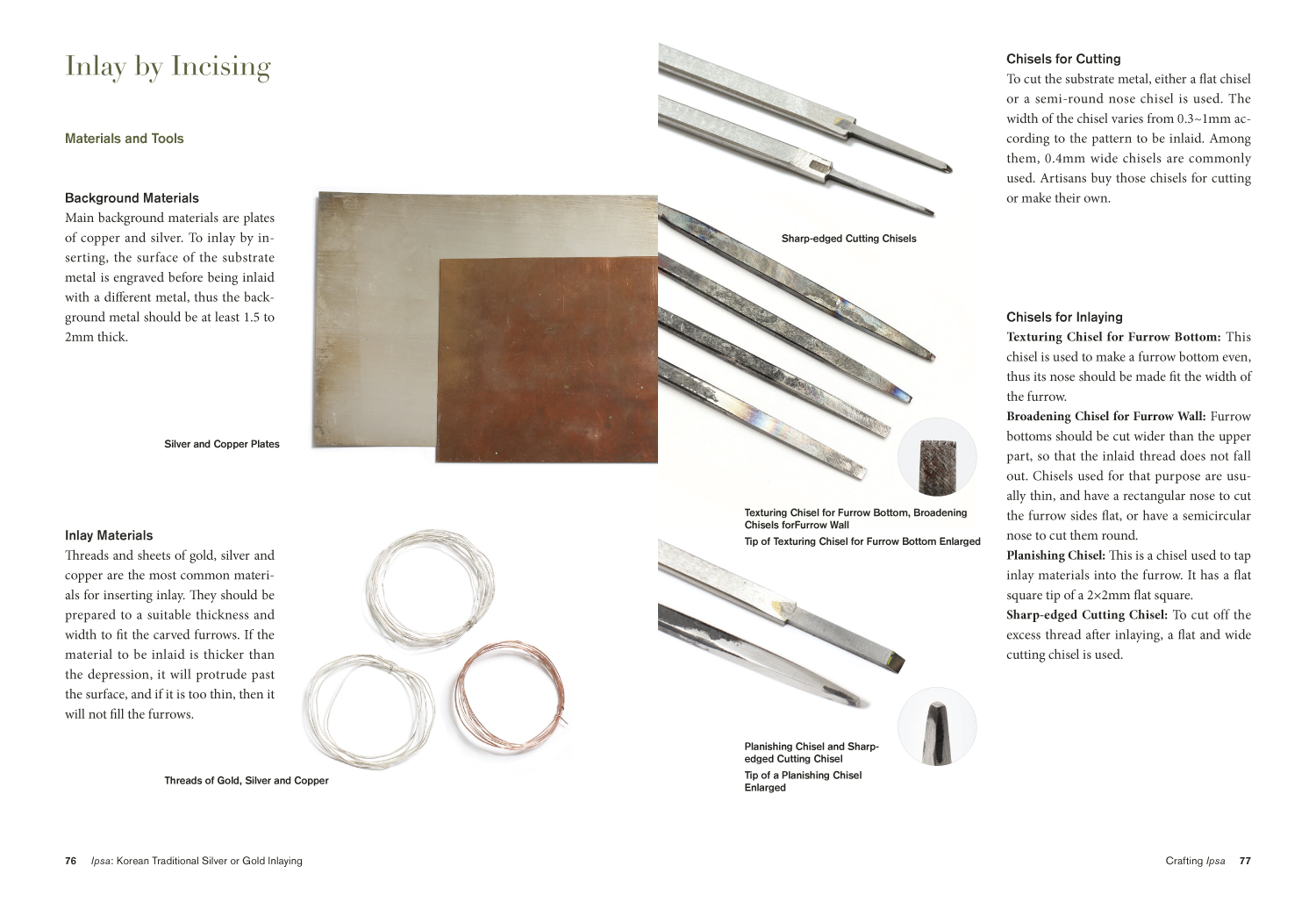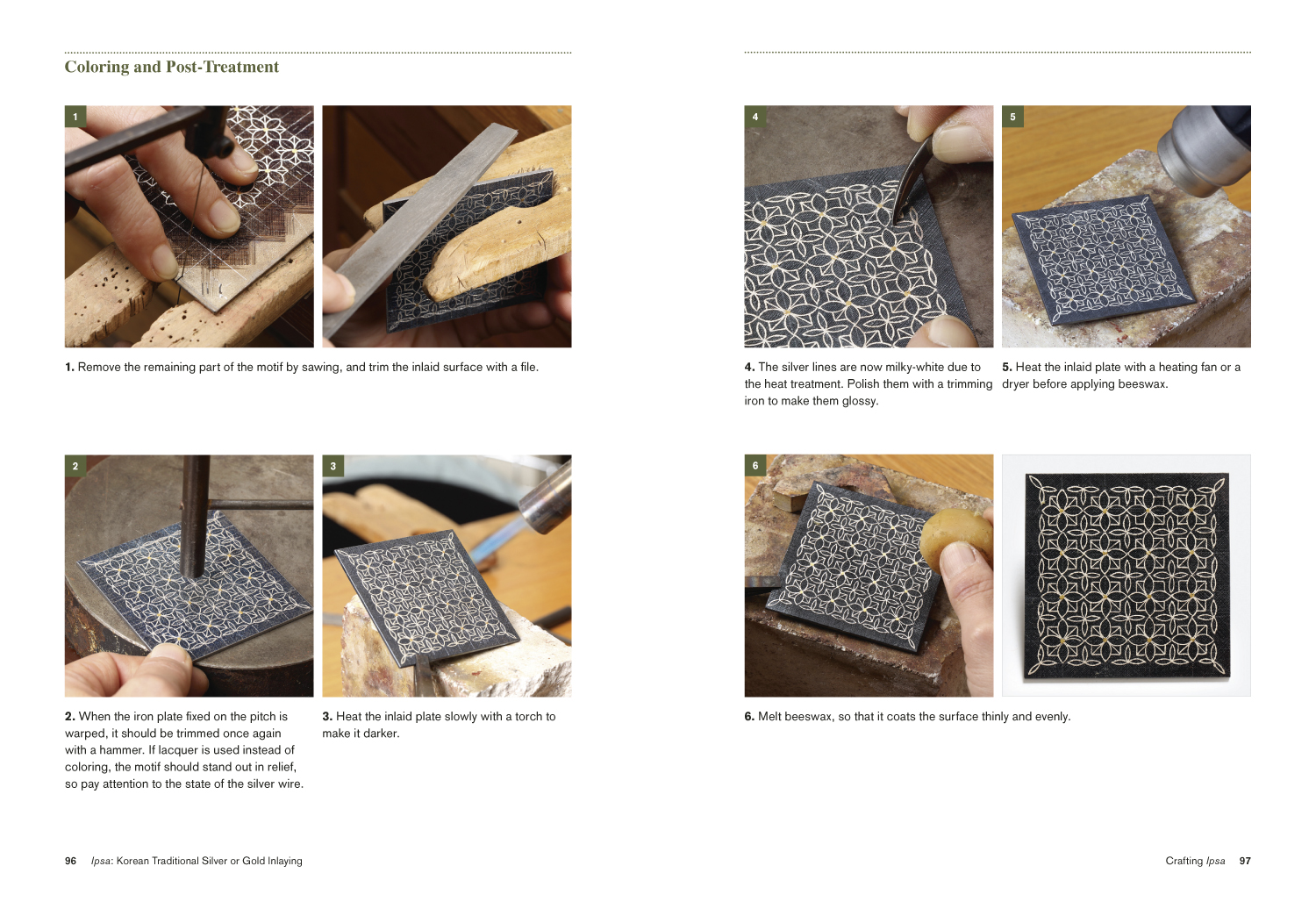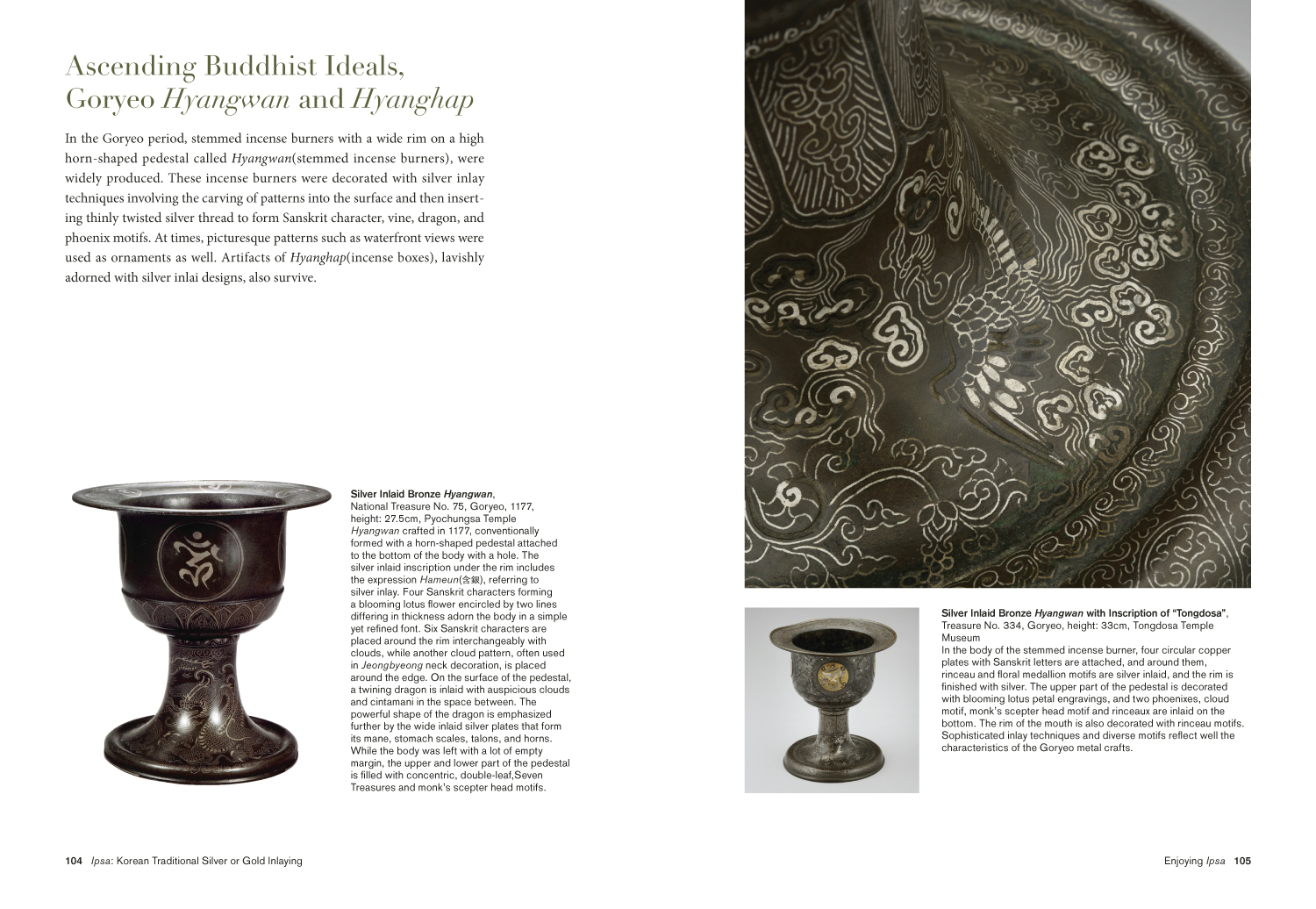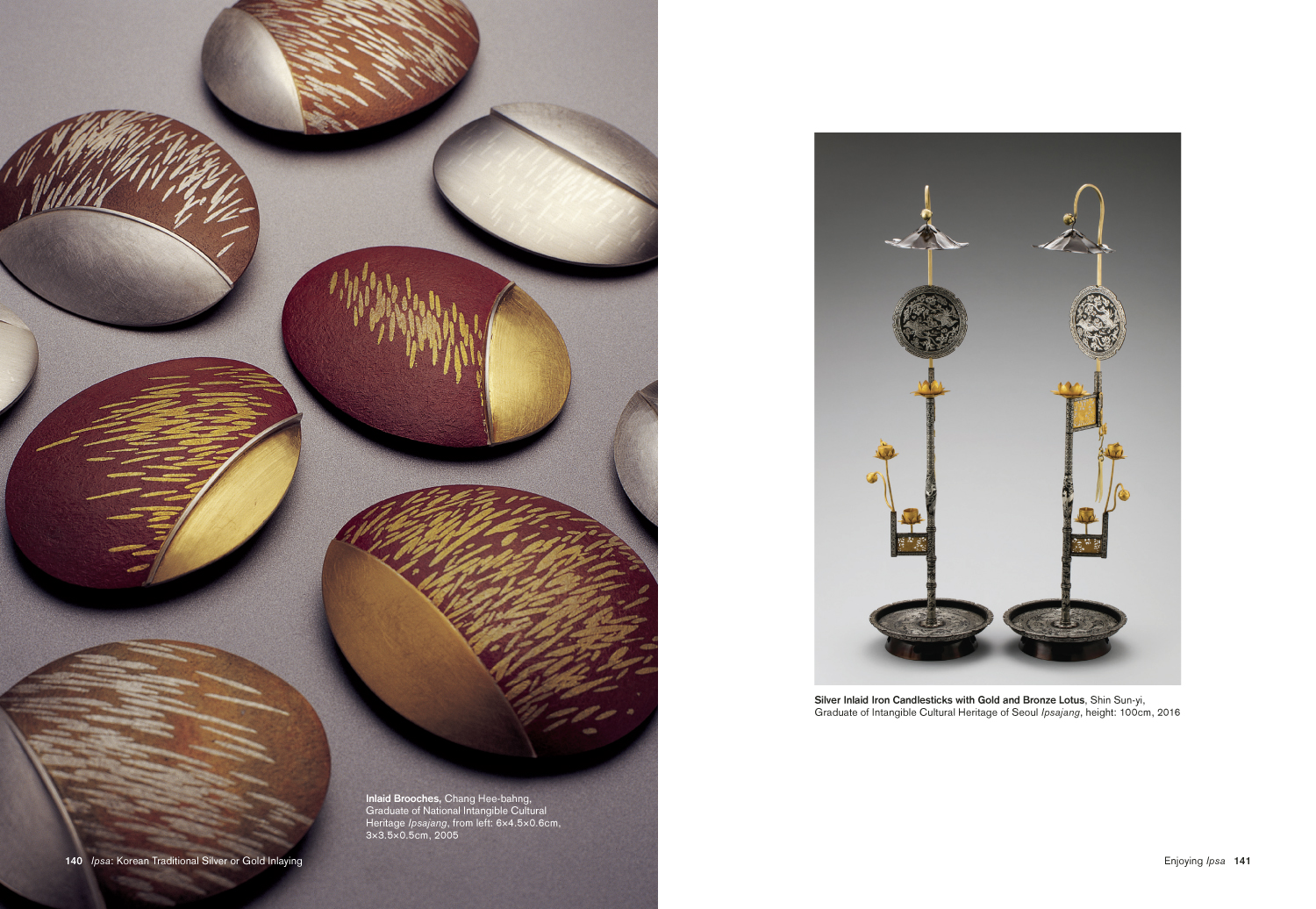분야별 도서 분야 별로 보는 미진사 도서
This book,
Chapter 1, “About Ipsa”, introduces the definition, history, usage, types and motifs of inlay.
Chapter 2, “Crafting Ipsa”, provides photographs and descriptions of materials and tools used for each of the ‘inlay by incising’ and ‘inlay by texturing’ techniques, detailing their characteristics and processes.
Finally, Chapter 3, “Enjoying Ipsa”, explores the highlights of expressive characteristics and meanings in exemplary Korean inlay craftworks of each period. A list of Joseon period inlay masters and stemmed incense inscriptions are provided in the appendix.
Chapter 1
About Ipsa
Definition of Ipsa 14
History of Ipsa 20
Uses of Ipsa 39
Arts of Ipsa 47
Motifs of Ipsa 54
Chapter 2
Crafting Ipsa
Inlay by Incising 76
Inlay by Texturing 86
Chapter 3
Enjoying Ipsa
Swords of Sovereignty from the Three Kingdoms Period 100
Balance of Gold and Silver in the Unified Silla 102
Ascending Buddhist Ideals, Goryeo Hyangwan and Hyanghap 104
Jeongbyeong and Subyeong with Landscape Motifs 108
Glamorous Tastes of Aristocratic Arts of Goryeo 112
Authority and Science at Joseon Court 116
Daily Life of Seonbi, Joseon Literati 120
Joseon Buddhism Inscribed in Sanskrit Letters 126
Contemporary Ipsa 130
Appendix
Masters 146
Craft & Design Map 147
Hyangwan Inscriptions Referring to Metal Inlaying 148
List of Active Ipsajang in the Joseon Period 150
List of Artifacts and Illustrations 152
Bibliography 156
Collaborators 157
Cooperation Organizations 158
Index 159
The publication of Korea Craft & Design Foundation, “Korean Craft & Design Resource Book” series, aims at distributing the knowledge on the traditional craftsmanship and technology of Korea, and at providing them not only to experts of relevant fields, but also to the general public. The first book of the series, Najeon, Korean Nacre Lacquerware was published in 2011, followed by Traditional Natural Dyeing in 2012, Somok: Korean Traditional Joinery, Jangseok: Korean Traditional Metalwork for Joinery and Hanji: Korean Handmade Paper in 2013, Baekja: Korean Traditional Porcelain and Nubi: Korean Traditional Quilt in 2014, and Onggi: Korean Traditional Earthenware and Chimseon: Korean Traditional Sewing. The series continues in 2016: Maedeup: Korean Traditional Decorative Knotting and Ipsa: Korean Traditional Silver or Gold Inlaying are on our publication list. Ipsa, Korean traditional metal inlaying, perfectly reflects the wisdom, creativity and aesthetics of the Korean with its exquisite brilliant appearance and techniques.
Ipsa refers to a technique which involves carving a line or plane into a metal surface and creating patterns by filling the carved part with a metal different from the background metal, and numerous high-quality artifacts decorated with Ipsa technique have been handed down since the Three Kingdoms period, reflecting the high standard of Korean traditional metal craftsmanship. For the book Ipsa: Korean Traditional Silver and Gold Inlaying we asked multiple experts for advice, for the purpose of retracing the values and merits of the traditional Ipsa technique and bringing them to a wider audience. We publish this book in anticipation that the past and present of Korean traditional metal inlaying would be understood and handed down to the next generations.

